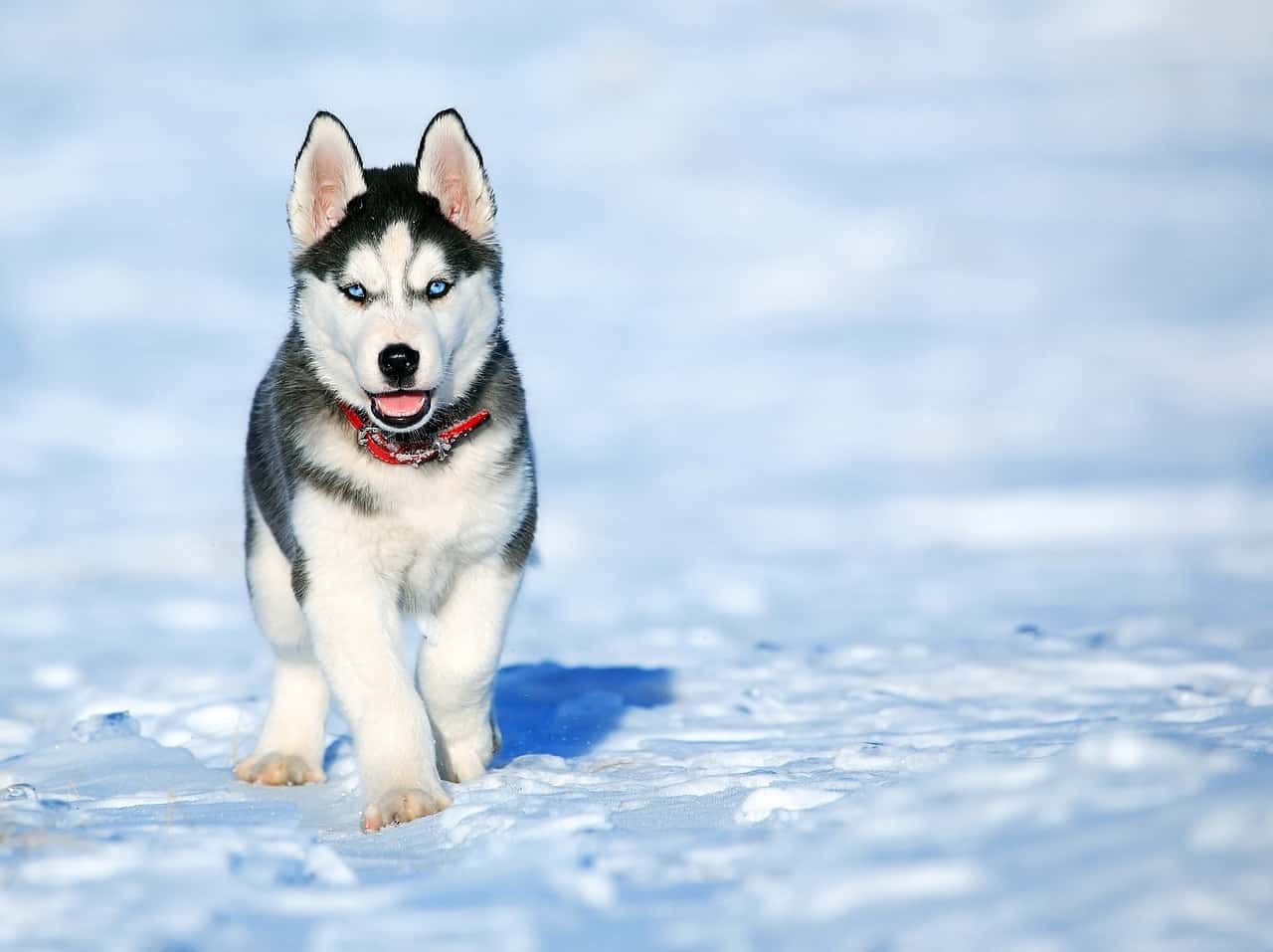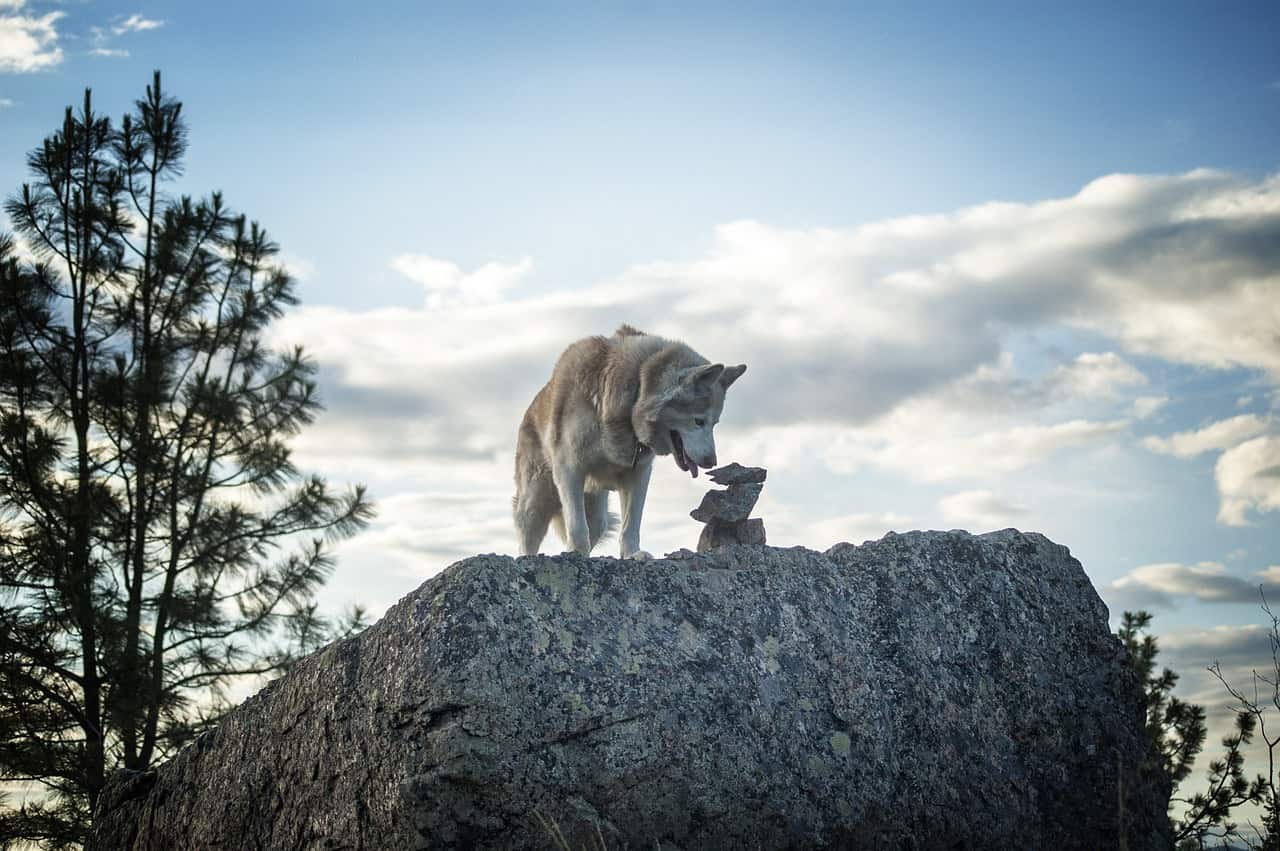Unleashing the Power: Exploring the Mighty Bite Force of Siberian Huskies Siberian Huskies are known for their stunning blue eyes, sledding prowess, and friendly nature. But there’s one more astonishing attribute that sets them apart—their mighty bite force.
In this article, we delve into the jaw-dropping power behind those furry faces. With an average bite force of 320 pounds per square inch (psi), Siberian Huskies possess an impressive strength that can easily rival some of the most formidable dog breeds.
But what makes their bite force so remarkable? Is it their ancestry as sled dogs, or is there something more behind it? Throughout this exploration, we’ll unravel the unique anatomical features that contribute to their ability to deliver such a powerful bite.
We’ll also uncover the connection between their bite force and their survival skills in their native Arctic environment.
So, whether you’re a proud Husky owner, a canine enthusiast, or simply curious about the untamed power of these beautiful dogs, join us as we unlock the secrets of the Siberian Husky’s bite force. Prepare to be amazed by the strength that lies behind those friendly faces.
Understanding the concept of bite force
Understanding the concept of bite force involves recognizing the amount of pressure a dog can exert with its jaws, measured in pounds per square inch (PSI).
Breeds with broad, powerful jaws, like the Cane Corso, typically exhibit higher bite forces compared to those with narrower jaws.
The strength of the masseter and temporalis muscles, which are responsible for jaw movement, also plays a crucial role. Larger breeds, such as German Shepherds and Rottweilers, generally have greater bite forces due to their robust jaw structures.
This evolutionary trait reflects the dog’s historical roles in hunting or guarding, highlighting their physical capabilities. Understanding bite force provides insight into a dog’s abilities and helps in managing and training them effectively.
Factors that contribute to the bite force of Siberian Huskies
First, their jaw anatomy, characterized by a moderately strong, well-aligned bite with a slightly broader muzzle, contributes to their overall bite strength.
The masseter and temporalis muscles, which power the jaw, are robust but not as developed as those in breeds known for exceptionally high bite forces. Additionally, Siberian Huskies are medium-sized dogs, and their bite force aligns with their overall muscular build and size.
Their evolutionary background as sled dogs, rather than hunters or guard dogs, also plays a role, as their bite strength was less critical to their traditional working roles. Despite this, the combination of their anatomical structure and muscle strength ensures a functional and effective bite suited to their needs.
Comparing the bite force of Siberian Huskies with other dog breeds
Comparing the bite force of Siberian huskies with other dog breeds reveals notable differences in strength and capability.
Siberian Huskies possess a moderate bite force, typically measured at around 320 to 350 PSI, which reflects their balanced jaw structure and muscle development.
This is considerably lower than breeds specifically known for their powerful bite, such as the Kangal, which can exert over 700 PSI, or the Rottweiler, with a bite force of around 328 to 350 PSI.
In contrast, breeds like the German Shepherd and Cane Corso also display significant bite strength, with estimates ranging between 238 and 500 PSI, highlighting their more robust jaw anatomy and muscular build. While Huskies’ bite force is less extreme compared to these high-bite-force breeds, it is well-suited to their historical roles as sled dogs, where endurance and teamwork were more critical than sheer bite strength.
The evolutionary reasons behind the strong bite force of Siberian Huskies
The evolutionary reasons behind the strong bite force of Siberian Huskies are linked to their historical roles and survival needs in harsh environments.
As sled dogs, Siberian huskies were bred to pull heavy loads over long distances in extreme cold. This required not just physical endurance and strength but also a strong bite for various tasks.
In their original roles, Huskies used their jaws for several practical purposes, such as pulling sleds, handling gear, and occasionally securing food. Their bite force had to be sufficient to manage the rigors of these tasks, especially in environments where strength and resilience were crucial.
While not as pronounced as some other breeds, the Huskies’ bite strength was developed to complement their overall physical robustness and stamina, reflecting their adaptability to the demanding conditions of the Arctic and sub-Arctic regions.
Their evolutionary design balanced bite strength with other attributes essential for their survival and effectiveness as working dogs.
Applications of the bite force in Siberian Huskies’ daily lives
In the daily lives of Siberian Huskies, their bite force plays a practical yet modest role.
As sled dogs, Huskies use their bite strength primarily for handling and securing harnesses and sled gear. While their bite force is not as extreme as in some other breeds, it is sufficient for managing ropes and equipment crucial for their work.
Additionally, their bite force aids in interactions with other dogs, allowing them to communicate and assert themselves in a pack setting.
This capability also helps them manipulate and carry various objects, from toys to food.
Overall, while the bite force of Siberian huskies is not the most pronounced, it supports their physical activities and daily needs, contributing to their effectiveness as working dogs and their ability to navigate their environment.
How to measure the bite force of Siberian Huskies
Measuring the bite force of Siberian Huskies, or any dog breed, typically involves specialized equipment and procedures. Here’s how it is generally done:
- Bite Force Meter: The primary tool used is a bite force meter, a device specifically designed to measure the amount of pressure a dog exerts when biting. This device consists of a pressure-sensitive plate or a gauge that the dog bites down on.
- Training and Conditioning: Before measurement, the dog is often conditioned to bite the device in a controlled manner. This ensures accurate readings and helps the dog get used to the process.
- Measurement Procedure: The dog is prompted to bite the device as hard as possible. Multiple readings may be taken to ensure accuracy and account for variability.
- Controlled Environment: Measurements are typically taken in a controlled environment to minimize stress and distractions, ensuring that the dog can exert its full bite force.
- Professional Supervision: It is advisable to have a professional, such as a veterinarian or a trained animal behaviorist, conduct the measurement to ensure the procedure is safe and accurate.
- Data Interpretation: The collected data is analyzed to determine the dog’s bite force. Comparisons are often made with other breeds to understand the relative strength of the bite.
This process provides insights into the dog’s jaw strength and can be useful for various applications, including understanding breed characteristics.
Training and managing the bite force of Siberian Huskies
Training and managing the bite force of Siberian Huskies involves a combination of proper handling and targeted exercises to ensure control and safety. Given that Huskies have a moderate bite force, training focuses on harnessing their natural strength in a controlled manner.
Positive reinforcement techniques are used to encourage appropriate biting behavior, such as using chew toys and engaging in controlled games like tug-of-war, which help manage and direct their bite force constructively.
Consistent training sessions, guided by a professional, if necessary, ensure that Huskies learn to modulate their bite pressure, particularly during interactions with people and other animals. Proper management also involves providing durable toys and equipment that can withstand their bite, preventing accidental damage or injury.
By focusing on these practices, owners can effectively train and manage the Siberian huskies’ bite force, enhancing their overall behavior and safety.
Common misconceptions about Siberian Huskies’ bite force
Common misconceptions about Siberian Huskies’ bite force often stem from misunderstandings about the breed’s capabilities and characteristics.
One prevalent myth is that Huskies have an exceptionally high bite force, similar to that of breeds known for their powerful jaws, such as the Kangal or Rottweiler. In reality, while Huskies possess a moderate bite force suitable for their roles, it is not as extreme as in these other breeds.
Another misconception is that Huskies’ bite force is primarily aggressive, which overlooks the breed’s historically cooperative and work-oriented nature.
Their bite force is adapted to their tasks, like handling sled equipment and interacting within their pack, rather than for aggression.
Additionally, some people might mistakenly believe that Huskies’ bite force is insufficient for effective training or control, whereas, with proper management and training, their bite strength can be directed positively.
Understanding these nuances helps in accurately appreciating the Siberian Huskies’ physical attributes and ensuring their proper care and training.
Conclusion: The remarkable power and importance of understanding the bite force of Siberian Huskies
In conclusion, understanding the bite force of Siberian Huskies highlights both the remarkable power and the nuanced role this breed plays.
While their bite force is moderate compared to some breeds, it is well-adapted to their historical and practical needs, such as handling sled equipment and interacting within their pack.
Recognizing the strength of their bite force is crucial for effective training, managing interactions, and ensuring safety.
By appreciating how their bite force fits into their overall physical capabilities and training needs, owners can better support their Huskies’ well-being and harness their abilities in positive ways.
This understanding underscores the importance of informed and responsible care, ultimately enhancing the relationship between Huskies and their handlers.

